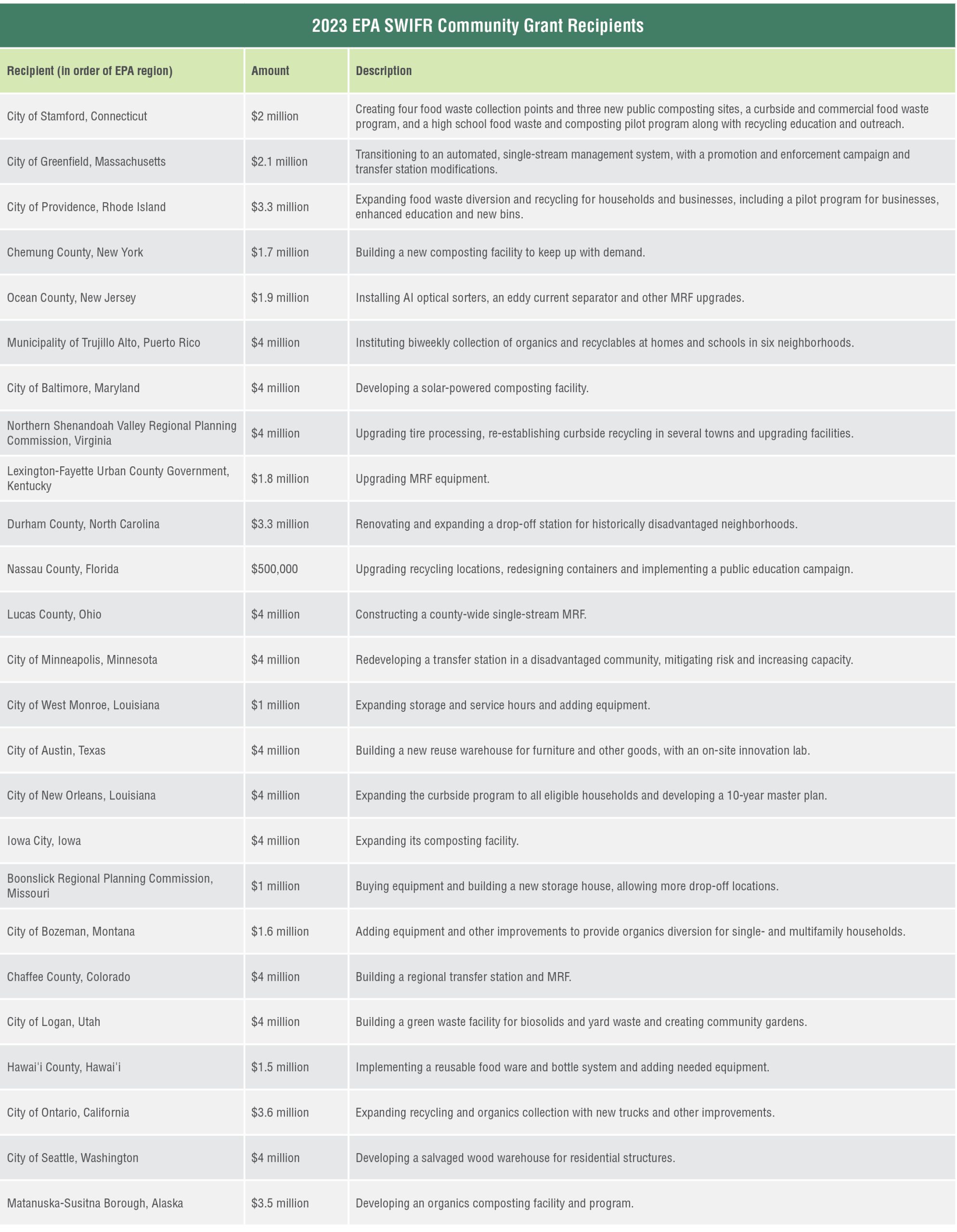Rawpixel.com/Shutterstock.
This article appeared in the October 2024 issue of Resource Recycling. Subscribe today for access to all print content.
If you missed the chance to grab a slice of the $198 million federal recycling grant pie last year, your second chance has arrived.
More than $100 million is available to local governments, Native tribes and other organizations for either recycling infrastructure on one hand or public education around the topics of food waste and composting on the other, the U.S. EPA announced in September. The announcement came as recipients of the first round in 2023 began hiring staff, collecting data, buying equipment and launching local outreach campaigns.
All of those millions came courtesy of the 2021 Bipartisan Infrastructure Law, which allocated hundreds of billions of dollars to transportation, energy and other sectors.
“Thanks to President Biden’s Investing in America agenda, EPA is deploying unprecedented resources to improve recycling services and increase educational outreach to communities,” EPA Administrator Michael S. Regan said in a written statement. “When we work together to prevent waste that contributes to climate change, we support local economies, create jobs that pay well, and better protect the health of everyone in the community.”
As in the first round, the new grant program prioritizes proposals that would benefit “communities that are marginalized by underinvestment and overburdened by pollution” while bolstering a more circular economy nationwide, according to the announcement. It’s available in three buckets:
- Solid Waste Infrastructure for Recycling grants for federally recognized tribes and intertribal consortia: $20 million total for individual grants ranging from $100,000 to $1.5 million, to establish, grow or otherwise improve recycling collection and management systems. As of this writing, applications are due March 14, 2025.
- SWIFR grants for political subdivisions of states and territories, such as cities and counties: $58 million total for individual grants from $500,000 to $5 million, for the same purposes as the tribal grants. Applications are due Dec. 20.
- Recycling education and outreach: a single $39 million grant for a coalition project that would implement a national consumer food waste reduction campaign, increase the market for compost and boost education and outreach about composting. Applications are due Dec. 20.
Applying for federal grants can be an intimidating process, requiring meticulous documentation and detailed planning. But it’s also an arena where even small organizations that have never received a federal grant before can succeed, said Jill Buck, founder and board member of the Go Green Initiative. The California-based nonprofit received $1.1 million last year, its first EPA grant ever, to work with school district staff and high school students in Camden, New Jersey, to spread understanding and participation in recycling programs.
“It’s not for the weak of heart, I will tell you that,” Buck said of the application process, adding that applicants should start early and take advantage of EPA’s informational sessions and other technical assistance. “This is the ultimate reading comprehension exercise; you really have to be fastidious and have tremendous attention to detail when it comes to the instructions.”
Fitting all of the needed information within the page limit can feel “like squeezing a watermelon into a Coke bottle,” she said. “Then you need to demonstrate that you can handle the money.”
A clear and compelling purpose also helps, said Susan Caswell, sustainability director for Florida’s Osceola County. The county received about $750,000 for an education and demonstration effort with a particular focus on glass, which the county had to give up in its bids for county-wide recycling and trash pickup service in 2019 — “every single potential vendor asked us to remove glass,” Caswell said. Yet why the county doesn’t recycle glass is still one of the most frequent questions she hears, and some residents pay a private service to collect it.
The education campaign will work with local schools and feature a mobile glass pulverizer, not only to process the material right in front of residents’ own eyes but also to harness the latent interest in glass to inspire recycling initiatives in the area, Caswell said. The area is full of hotels and restaurants, for example, which generate “just a tremendous amount of glass.”
“We went for the education and outreach kind of as the first step in rethinking glass recycling for the county,” Caswell said. “It allowed us to tell that story in an effective way.”
Projects such as these also highlight how the EPA grants can have ripple effects, both in their targeted communities and in others that might follow their example. Buck said the New Jersey plan — particularly environmental clubs, internships and leadership development for high school students — already proved itself in Pleasanton, California. Since the Go Green Initiative launched a similar project almost a decade ago, the city has seen recycling rates and collections rise while contamination fell by 27%, according to a letter from the city to the EPA.
“They were getting out to businesses and church groups and civic organizations,” Buck said of the Pleasanton students. And as Caswell put it, when it comes to the youth, “if you get them engaged in it, then they start getting on their parents’ case to do better.”


